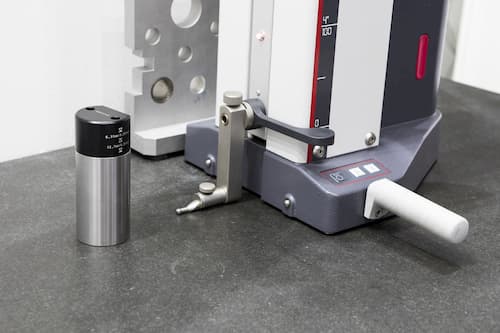Digital height gages are devices that are used to measure the height of objects. As part of the process of measuring heights, most digital height gages are capable of marking the object itself in order to record the reading. Outside precision tooling, similar tools are used in hospitals to measure the height of patients. Height gauges are used in a variety of processes and typically measure height along a single vertical axis. There are three main types of height gages namely vernier, dial, and digital height gages.
Vernier and Dial Height Gages
Vernier scales are finely tooled height gages that rely on a base and a vertical measuring scale. The vertical measuring scale is calibrated, and using an attached Vernier scale, readings can be made off the object being measured. Dial height gages, on the other hand, work in the same way as vernier height gages except for the fact that height readings are made on a dial display that’s attached to the machine.
Digital Height Gages
Digital height gages are the latest in the evolution of height gages and come with many new features that help improve ease of use and accuracy of readings. Here are some of the ways that digital height gages that can raise the standard of your work.
- Better accuracy
Digital height gages can significantly improve the accuracy of your measurements. This is because they come with greater stability and weight, making it hard for them to slide on the bench top. Digital height gages are now able to measure diameters and thicknesses of objects.
- Distance between centers
Digital height gages are now able to measure distances between two centers. They do this by having the ability to record the highest and lowest points between a sweep and thus can calculate the distance between these two points. These recordings are stored within the machine’s memory and can be retrieved with a simple push of a button.
- Diagonal measurements
These gages are capable of measuring diagonal measurements. You can do this by rotating the object 90 degrees and measuring it on the digital height gage.
- Other measurements
These gages are now capable of measuring horizontal flatness by simply pushing a single button and sliding the object (or the height gage) horizontally.
- Data output
These gages allow the user to do more with the data that is produced by the machine. With its various data ports, users can export data from the machine and into various spreadsheet programs, allowing them to analyze, as well as share the data easily through email. Users have the ability to put time stamps on the data as well, which enables better tracking and comparison of data sets over a period of time.
- Pre-measured points
These gages make it possible for an operator to take accurate measurements by making sure that no pre-measured points are overlooked. This is useful especially for a new operator who might overlook some points during measurement. Digital height gages are also able to compensate for the effects of temperature on various materials.





